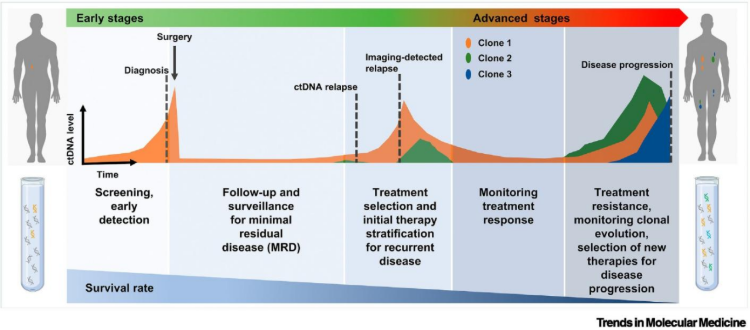Minimal Residual Disease Test
Published Jan. 16, 2024
By Hopkins Medtech
What is Minimal Residual Disease Testing?
Minimal residual disease (MRD) testing refers to a highly sensitive method used in oncology to detect small amounts of cancer cells that may remain in the body after treatment. This technique aims to identify residual disease at a level undetectable by traditional imaging or laboratory tests. MRD testing plays a pivotal role in personalized cancer care, allowing for precise and targeted approaches to treatment, monitoring, and follow-up. Its ability to detect residual disease at very low levels enhances the management and prognosis of various types of cancers, ultimately aiming for better outcomes and improved patient care.
Significance of Minimal Residual Disease Testing

MRD testing provides important information to healthcare providers in several key areas:
Treatment Response: It helps evaluate how well a patient has responded to treatment. If MRD is undetectable after therapy, it suggests a deeper remission, indicating a better response to treatment.
Prognosis: MRD testing provides prognostic information about the likelihood of disease recurrence or relapse. Patients with detectable MRD might have a higher risk of relapse than those with undetectable MRD.
Treatment Decision-Making: Results from MRD testing guide treatment decisions by informing whether additional therapy, such as targeted treatments or intensified therapy, is necessary to eliminate residual disease.
Long-Term Monitoring: It facilitates long-term monitoring to detect early signs of disease recurrence, allowing for prompt intervention and potentially improving patient outcomes.
What are the methods of Minimal Residual Disease Testing?
MRD testing involves analyzing biological samples, such as bone marrow, blood, or other tissues, to detect and quantify residual cancer cells. It utilizes advanced technologies, such as flow cytometry, polymerase chain reaction (PCR), next-generation sequencing (NGS), or other molecular and immunological methods, to identify and characterize these residual cancer cells.
Common cancers that involve MRD testing
MRD testing is particularly relevant for certain types of cancers where residual disease after treatment can be challenging to detect with traditional methods. Common cancers where MRD testing is utilized include:
1. Leukemia:
Acute Lymphoblastic Leukemia (ALL): MRD testing is crucial in assessing response to treatment and predicting relapse in ALL patients, especially in pediatric cases.
Acute Myeloid Leukemia (AML): MRD monitoring is used to evaluate treatment response and guide post-remission therapy decisions in AML.
2. Lymphomas:
Hodgkin Lymphoma (HL) and Non-Hodgkin Lymphoma (NHL): MRD testing is employed in assessing treatment response, predicting relapse, and guiding therapy decisions for these lymphomas.
3. Multiple Myeloma:
MRD testing is increasingly utilized in multiple myeloma to assess treatment response, depth of remission, and risk of relapse following therapy.
4. Solid Tumors:
Breast Cancer: While less common, MRD testing is being explored in breast cancer to evaluate residual disease after neoadjuvant therapy.
Colorectal Cancer: In certain cases, MRD testing is employed to monitor treatment response and assess residual disease after surgery and adjuvant therapy.

